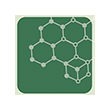Engaging Students in Computational Thinking During Science Investigations

- Teachers should build on students’ existing computational practices using games, simulations, and everyday technologies in instruction.
- District Staff & PD Providers should include scientists and engineers in PD efforts who can connect teachers with contemporary computational practices, usable data sets for students to analyze, and computational tools for the classroom.
- School Leaders should invest in infrastructure, professional learning, and equipment to support classroom computational inquiry.
What Is The Issue?
Inquiry in science has become increasingly computational over the past several decades. The broad availability of computational devices, sensor networks, visualizations, networking infrastructure, and programming have revolutionized the way science and engineering investigations are carried out. Computational thinking practices enable unique modes of scientific inquiry that allow scientists to create models and simulations to generate data, and to understand and predict complex phenomena. K-12 science classrooms are natural contexts in which students can engage in computational thinking practices during their investigations.
Authors:
BY VERONICA CASSONE MCGOWAN, ELAINE KLEIN & DEB MORRISON | FEBRUARY 2019
Reflection Questions
- How does your curriculum lend itself to the addition of computational practices such as use of interactive simulations and data visualization models?
- What types of computational expertise and experiences do your students bring to the classroom? How can you deepen their computational practices to move beyond information seeking and research to data generation, analysis, modeling and visualization?
- What resources, such as school technology support teams, online tutorials, and local scientific experts, can you leverage for computational practices support in your classroom?
Things to Consider
- Using Mathematics and Computational Thinking: This practice in the Framework actually encompasses a diverse set of practices, which vary depending on topic and discipline. As a science and engineering practice, computational thinking is “a way of thinking, of working, and of approaching problems using computers as problem solving tools” (SRI, 2015). In this sense, computational thinking can be used in the classroom to expand students’ experiences and learning by broadening the scope and type of investigations that students can undertake, with the support of computational tools.
- The practices interconnect in meaningful ways. Although computational thinking is listed as a discrete practice, incorporating a computational approach to students’ science learning engages them in a suite of related science and engineering practices and crosscutting concepts. These practices include developing and using models, analyzing and interpreting data, and designing solutions, which through investigations can surface behavior and patterns of both natural and human-made systems and systems models.
- Computational applications in science. Computational approaches to science inquiry enable students to investigate large-scale complex phenomena such as climate change, public health, and evolution. Using computational tools—including simulations, agent-based models, and large data sets coupled with appropriate data analysis strategies—can help students visualize the emergent properties of systems. In addition, games and simulations can engage students in contemporary issues around scientific phenomena (see example).
- Computational thinking encompasses a broad set of practices that students can engage with in computational and non-computational ways. In particular, abstraction and decomposition are central computational thinking practices as well as everyday habits of mind that can be practiced across settings as students build, test, and revise models and simulations. Coding is a practice scientists often use to create models and automate processes in their investigations.
Attending to Equity
Students often bring expertise from everyday computational experiences, such as video gaming, coding, building and using apps, working with spreadsheets, or using computers for creating illustrations, videos, stories, and models. These everyday experiences can be leveraged in the classroom by positioning students as experts on computational tools and practices they are familiar with. Additionally, when students undertake computational thinking practices in school, it helps to bridge the opportunity gap for students who do not have easy access to technology outside of school.
Recommended Actions You Can Take
- Explore these instructional modules and PD resources to integrate simulation and modeling into middle school science.
- Explore these materials to understand computational thinking across grades.
- Engage students in activities to foster their understanding of computational thinking without a computer.
- Connect your approach to concepts and practices in computer science.
- Explore these open source resources for promoting equity in computer science.
ALSO SEE STEM TEACHING TOOLS
STEM Teaching Tools content copyright 2014-22 UW Institute for Science + Math Education. All rights reserved.
This site is primarily funded by the National Science Foundation (NSF) through Award #1920249 (previously through Awards #1238253 and #1854059). Opinions expressed are not those of any funding agency.
Work is licensed under a Creative Commons Attribution-ShareAlike 4.0 Unported License. Others may adapt with attribution. Funded by the National Science Foundation (NSF). Opinions expressed are not those of any funding agency.


 Email Feedback
Email Feedback


